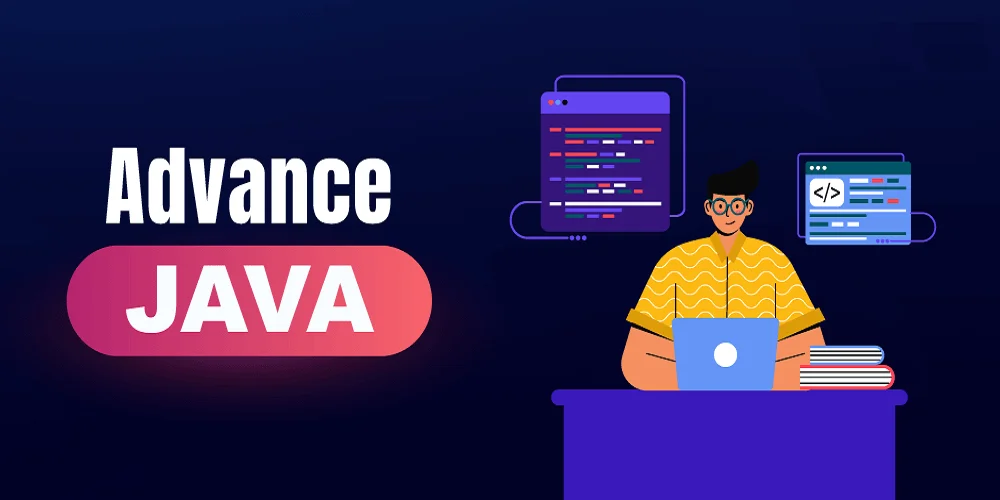Every passing day, the volume and complexity of the data increase in this world. In today’s competitive environment, obtaining invaluable insights from the volume of the information ocean has become imperative for businesses belonging to every sector. Big Data analytics and Machine Learning (ML) play their part in that. Big Data analytics involves methods and techniques for processing and analyzing massive datasets, while Machine Learning enables computers to learn from the data and make data-driven predictions. Java is a mature, widely used programming language and now has become a sharp tool that performs not only analytics for Big Data but also Machine Learning algorithms efficiently.
In Big Data processing and building complex Machine Learning models, Java exhibits great strengths in scalability, performance, and platform independence. The various aspects of Java in Big Data Analytics and Machine Learning Integration will be discussed in this article.
Why Java for Big Data Analytics?
Several important features are there to justify Java as a language for Big Data analytics applications.
Scalability:
Java applications can efficiently deal with huge volumes of data. Java for Big Data analysis thrives due to its ability to distribute tasks across multiple machines in a cluster, enabling parallel processing of massive data volumes. This distributed approach significantly reduces processing time and facilitates the analysis of datasets that would be impossible to handle on a single machine.

Image: Cluster Computing (multiple machines in a cluster)
Performance:
Java, through its just-in-time (JIT) compilation, translates bytecode into machine code during runtime, and so the performance is hardware-architecture-optimized. This is a reason why execution in Big Data processing is speedier compared with languages considered interpreted.

Image: Just-in-Time (JIT) Compilation
Platform Independence:
Java has the principle of “Write once, run anywhere.” Java code is a compilation into bytecode, which will run on any platform that has a Java Virtual Machine (JVM). This negates the need to rewrite code for varying operating systems and saves development time and resources in Big Data environments, which are often made up of diverse computing infrastructures.

Image: Java Virtual Machine (JVM)
Rich Ecosystem:
The powerful Java ecosystem offers a variety of libraries and frameworks built for Big Data use cases. By using such tools, complex functionalities are encapsulated, thus allowing the developer to focus on the logic of data analysis without needing to reinvent the wheel. We will talk more about these frameworks in the following section.
Java Frameworks for Big Data
There are various major Java frameworks, each catering to different needs within the Big Data analytics landscape.
Apache Hadoop:
This distributed processing framework forms the foundation for many Big Data solutions. Hadoop uses a distributed file system, known as Hadoop Distributed File System (HDFS), for storing data over multiple nodes of a cluster. It also provides a programming model known as MapReduce for parallel processing of large datasets. While MapReduce is very well-suited to batch processing, Hadoop provides more tools, such as YARN (Yet Another Resource Negotiator), to manage resources and extend the types of Big Data processing that can be handled.

Image: Apache Hadoop Logo
Apache Spark:
This has been introduced as a more general and faster processing paradigm compared to Hadoop’s MapReduce. Spark has capabilities in real-time and near real-time analytic processing. It provides really quick manipulation of the data with in-memory processing, lowering the time taken for processing against the disk-based operations done in Hadoop. Moreover, what makes Spark more powerful is its ability to support different kinds of workloads. It not only provides high speed but also has a rich set of APIs for different data processing applications, including Machine Learning algorithms and stream processing.

Image: Apache Spark Logo
Apache Flink:
Flink was designed for processing real-time streams, so it does great work with low-latency processing of unbounded, continuous data streams. It also allows for stateful computation to maintain context across the streams, thus giving support for more complex analytics over streams. Flink also smoothly collaborates with Apache Spark, making it a one-stop platform for both batch and real-time Big Data processing.

Image: Apache Flink Logo
Table: Comparison of Popular Java Frameworks for Big Data
| Feature | Apache Hadoop | Apache Spark | Apache Flink |
| Processing Model | Batch Processing (MapReduce) | Batch & Real-time (In-memory) | Real-time Stream Processing |
| Data Storage | HDFS (Distributed File System) | HDFS, Memory | HDFS, Memory |
| Focus | Scalable, Distributed Processing | Faster Processing, Broader Functionality | Low-latency Stream Processing |
Java and Machine Learning Integration
Object-oriented programming and its extremely robust libraries make Java software development services a fine choice for building and deploying Machine Learning models. Here are some major libraries in Java for Machine Learning:
- WEKA: This is an open-source Machine Learning algorithm collection with a user-friendly frontend for experimentation and prototyping. Weka represents many algorithms of classification, regression, and clustering. It allows developers to experiment with various algorithms and then go with the one that is most relevant to the particular ML task at hand.

Image: Weka Logo
- H2O: A scalable Machine Learning platform capable of performing distributed processing of large data across many machines. H2O supports deep learning models and a wide range of other algorithms. Serves the building and deploying of production-ready Machine Learning pipelines within Java environments.
- MOA (Massive Online Analysis): MOA is a high-throughput framework devised for online machine learning in the presence of data streams. Thus, MOA allows online learning and real-time adaptation as new data arrive, applicable to various domains like fraud detection and sensor data analysis.

Image: MOA Logo
Beyond these popular libraries, Java benefits from its integration with other prominent Machine Learning frameworks like TensorFlow and PyTorch through libraries like DL4J (Deeplearning4j). This enables developers to leverage the power of these frameworks while still working within the familiar Java ecosystem.
Java Data Analysis Techniques
Java for Big Data analysis empowers users to use a variety of techniques in data exploration and manipulation:
Data Cleaning and Preprocessing
This is an important activity that takes care of missing values, detects and removes outliers, and transforms data into a useful format for analysis. Java-based libraries are also available for such cleaning tasks, such as Apache Commons Lang and Apache POI.

Image: Medium
Statistical Analysis
Java supports statistical computation using built-in libraries and frameworks such as Apache Commons Math and Apache Mahout. These libraries offer plenty of functions for the calculation of different statistical measures including mean, median, standard deviation, and correlation coefficients. Statistical analysis is an important factor for deriving underlying characteristics of data and finding different patterns.

Image: Builtin
Data Visualization
It will be necessary to present extracted insights using strong visualizations. Java comes with libraries such as JFreeChart and D3.js (integrable using bridge JavaScript libraries) for creating different charts and graphs that help in representing visual trends and data relationships.

Image: ml4devs
Case Studies
Several real-world applications demonstrate the effectiveness of Java for Big Data analysis and Machine Learning integration.
Case Study 1: Personalized Recommendations at E-commerce Giant (Retail)
1) Challenge: There was this huge e-commerce platform that was struggling to personalize product recommendations for its massive user base. Although it scaled and functioned at that scale, the existing system couldn’t handle the ever-growing volume of user data and product information. This constrained its ability to provide laser-focused recommendations, potentially missing sales opportunities and decreasing user stickiness.
2) Solution: The company decided to harness the analysis of Big Data through Java, and an implemented recommendation system was developed using Apache Spark and Mahout libraries. Thus, the company could carry out real-time analysis of user behavior patterns about product attributes because of in-memory processing provided by Spark. Mahout’s recommendation algorithms help in providing personalized recommendations for every user based on his/her browsing and purchase history, along with the implicit signals of product reviews and click-through rates.
3) Outcome: There were large improvements in the recommendation system when it came to Java. Personalized recommendations brought a large increase in click-through and conversion rates, which directly grew the sales revenue. Secondly, the users also found the system much more engaging now, as the product recommendations made more sense to them.
Case Study 2: Real-time Fraud Detection in Financial Services (Banking)
1) Challenge: A leading financial institution is finding itself with a growing problem of fraudulent transactions. Its fraud detection system, currently working on rule-based traditional methods, finds it difficult to catch up with the changes in fraud tactics, which are extremely dynamic. This has led to financial losses and potential damage to customer trust.
2) Solution: Using Java and Machine Learning, the bank developed a real-time fraud detection system. The bank made use of a Java framework, Apache Flink, designed for stream processing, to analyze the data from real-time transactions. The Java Machine Learning models were developed using Java libraries such as H2O and trained using historical data for both fraudulent and legitimate transactions. Then, while checking on the transactions coming in real-time, these models checked the anomalies and suspicious patterns that can be the reason for potential fraud tries.
3) Outcome: A Java-based fraud detection system has indeed been very useful to the bank in increasing its ability to trap fraudulent transactions. Employing real-time analytics and Machine Learning models not only saved time in detecting fraudulent activities but also minimized losses for the bank. This was also able to protect the confidence of the customers concerning the financial transactions due to the system.
Advantages of Using Java
Several major advantages include:
-
Large Developer Community and Abundant Resources
Java is home to an enormous and active developer community that supports many online resources, tutorials, and forums. It is in a position to allow an individual who seeks an answer or needs some help in solving his/her concrete problem arising in work with Java in a Big Data environment.
-
Mature and Stable Language
Having a long history and wide acceptance, Java is a mature and stable programming language. Its strong error-handling mechanisms minimize development time and ensure code reliability, critical factors in Big Data analytics projects.
-
Integration with Existing Enterprise Java Systems
Most organizations have huge Java enterprise systems. This implies that Java could be easily linked up with any existing infrastructure to let these investments be reused for Big Data and Machine Learning projects. It not only reduces the cost of development but also reduces the management of data across systems.
Challenges and Considerations
While Java has significant advantages for Big Data and Machine Learning, some possible challenges may be taken into account.
-
Steeper Learning Curve
Java has a bit of a steep learning curve compared to some other scripting languages that are used a lot in data science. For developers not know the concepts of object-oriented programming, there will be an additional requirement of time to become proficient in Java development.
-
Verbosity of Code
Java code can sometimes be more verbose compared to languages like Python. While some argue this verbosity leads to clearer and more maintainable code, it can impact development speed for some tasks.
Therefore, an opportunity to decide upon Java or any other language for a Big Data and Machine Learning project lies mostly within detailed project requirements and specific developer’s competence. Evaluating these advantages and challenges will help determine whether Java is the right tool for a particular project or not.
Conclusion
Java is a critical player in the Big Data and Machine Learning industry. For businesses desiring to harness the power of insights, both Java for Big Data Analysis and Java and Machine Learning integration together provide one strong solution. It is scalable, high-performance, and rich in frameworks and libraries.
Although other languages might have the edge in some areas such as rapid prototyping, Java’s strength keeps it as the power of many Big Data and Machine Learning projects in enterprise integration and production-ready deployments. Growth and transformation taking place within the Big Data and Machine Learning, the future relevancy of Java can only be further cemented by continued improvements and active participation by the large community of Java developers.
Frequently Asked Questions
1) Is it good to learn Java if someone wants to work in it?
Java could be a good fit for data science, especially in enterprise systems that have an existing infrastructure based on Java. Given its strengths in scalability, performance, and integration capabilities, Java can be well-suited for large-scale data processing and building production-grade Machine Learning models. Nevertheless, for quick prototyping and exploratory data analysis, many data scientists may find languages like Python more appealing because of the easier syntax and myriad libraries.
2) Is Java ideal for Data Analytics?
While Python and R are more popular for their user-friendliness, Java in big data analytics offers advantages like scalability and performance for large datasets thanks to the Java Virtual Machine (JVM). Great libraries are usable for machine learning and deep learning tasks. Thus, Java can be a powerful tool, especially within the scope of an enterprise.
3) Is Java a good choice to perform Big Data analytics and Machine Learning?
Java is a perfectly valid Big Data analytics and Machine Learning weapon of choice, more so in enterprise scenarios. It is good in scalability, performance, and effective integration with Java-based systems. On the other hand, for an easy rapid prototype, some people find Python preferable because it reads more easily. Consider the needs of the project and the expertise of the team when making your choice.
4) Which Big Data job opportunities does Java introduce?
There is a huge demand for professionals who are good in Big Data and Machine Learning and with expertise in Java. Java for Big Data Analysis could open different career paths. For example:
- Big Data Engineer – Design and develop Big Data analytics in Java frameworks of Hadoop and Spark.
- Data Scientist (Java) – This position involves Java-based data wrangling, analytics, and model development.
- Machine Learning Engineer (Java) – This position involves the development, deployment, and management of Machine Learning models, using Java libraries, for instance, Weka and H2O.



